Inventions Comp 2021: Handy fencing and drainage kit
Fencing and drain-laying equipment dominated this year’s Inventions Competition.
Entries included a stack of ideas for simplifying the job of unrolling wire, natty field gate add-ons and simple but useful pipe-laying kit.
See also: How to build the perfect livestock fence
Geoff Beck’s gravel cart
Pot-holed tracks are a thing of the past for Norfolk farmer Geoff Beck, thanks to his adapted gravel cart.
He picked up the tired trailed hopper from a drainage contractor for just £100 and then set about fashioning a means of distributing aggregate evenly.
The first job was to shorten the original trench-filling discharge belt to throw the material in line with the cart’s rear wheel.
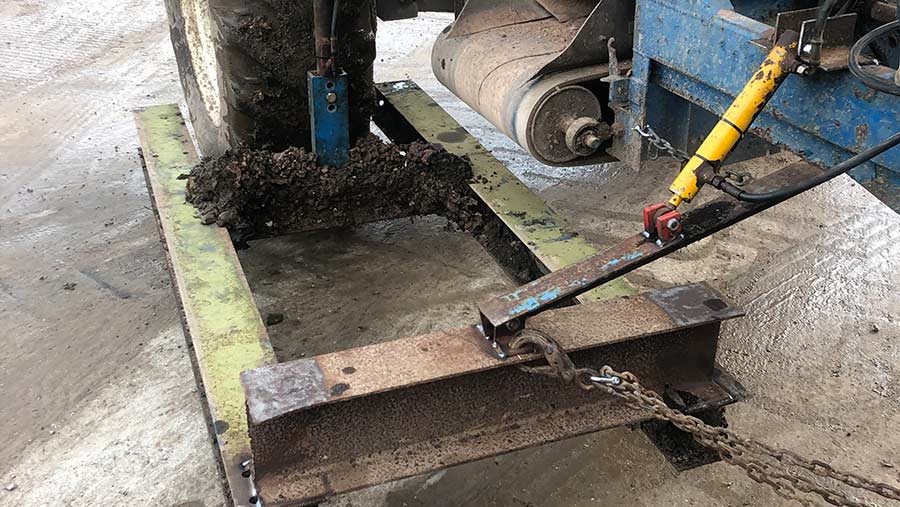
© Geoff Beck
To produce a level finish, he then used lengths of RSJ to form a long sledge. The position of this can be adjusted by rams at the front and back, allowing him to alter the thickness and spread of material to suit the depth and size of the dips.
There are several ways to control the quantity of aggregate being applied – by manually adjusting the opening of the chute at the bottom of the hopper, tweaking the speed of the conveyor using the tractor’s electronic spools or by driving the tractor faster or slower.
The cart’s rear wheel then acts as a press to firm the whole lot up.
Mr Beck’s farm has a number of grass tracks so, in most cases, he just adds a thin layer along the established wheelings to provide a bit more traction.
This means he uses very little material and the grass eventually grows through the layer, helping to bind it all together.
Keith Dodd’s wire roller
As a first-generation sheep farmer working on a tight budget, Keith Dodd couldn’t justify shelling out more than a thousand pounds for an off-the-shelf Rappa fencing kit.
Instead, he came up with his own way of laying out and picking up electric fence to save time when moving the sheep around their winter grazing blocks.
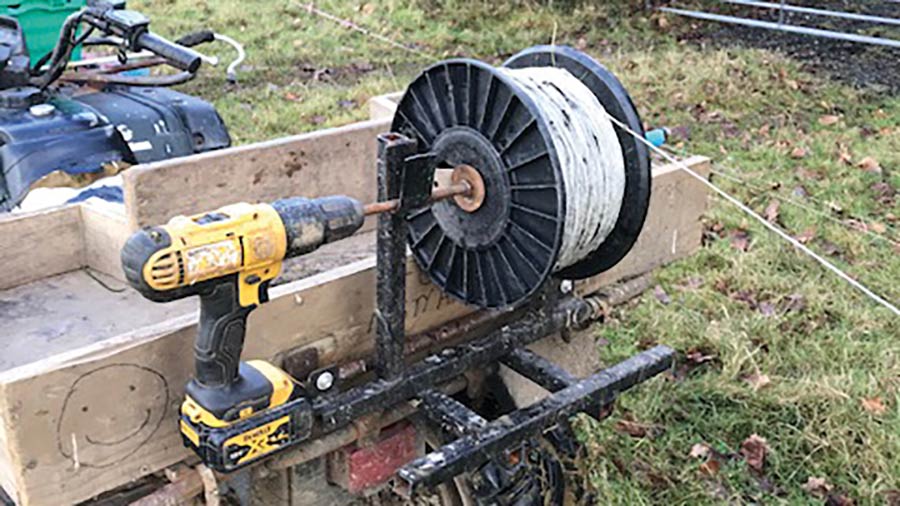
© Keith Dodd
The simple system involves a bracket mounted to the ATV’s rear frame that carries a wire spool. In pick-up mode, Mr Dodd and his wife simply pull out the stakes, untie the wire from the corner post and use a cordless drill to reel the wire in.
Laying it out is even simpler – one person drives the ATV, unreels the wire and distributes stakes, while the other marches along behind erecting it.
Marc Griffiths’ fence post carrier
This simple front-mounted fence post carrier is the work of Welsh beef and sheep farmer Marc Griffiths, and it was fashioned out of an old Evers and Wall sprayer frame he had lying around the yard.
He doesn’t have a front linkage on his John Deere 6530, so he fabricated a bracket that hangs on the tombstone. The original three-point linkage attachments were left in-situ in case he gets a front linkage at some point.
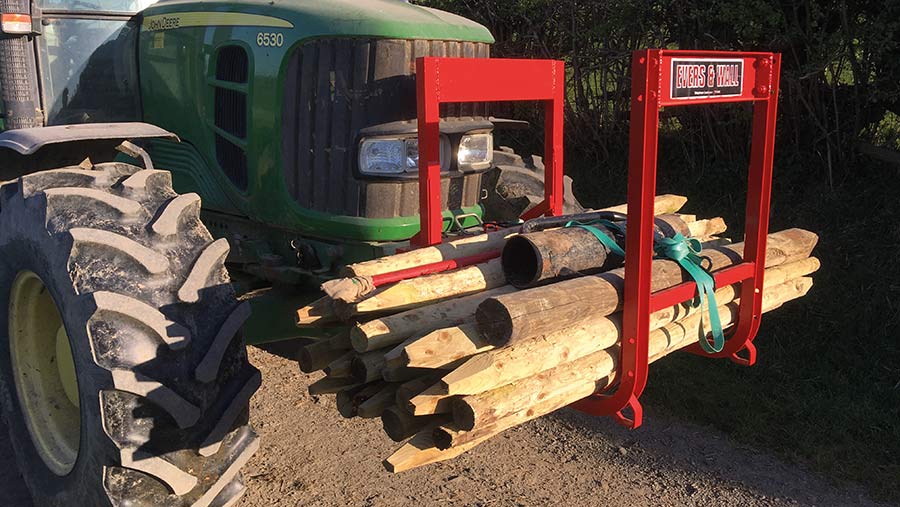
© Marc Griffiths
Marc Griffiths’ pipe unroller
Marc Griffiths grew tired of wrangling with reels of medium-density polyethylene water pipe, so decided to build a tool for unrolling it more efficiently.
He used a 200-litre drum to act as the hub for the unroller, as the external diameter is near identical to the centre of a roll of water pipe.
This is attached to a frame via a bearing that he salvaged from an old muckspreader axle. The whole assembly is placed on a trailer that Mr Griffiths originally built for carrying an IBC.
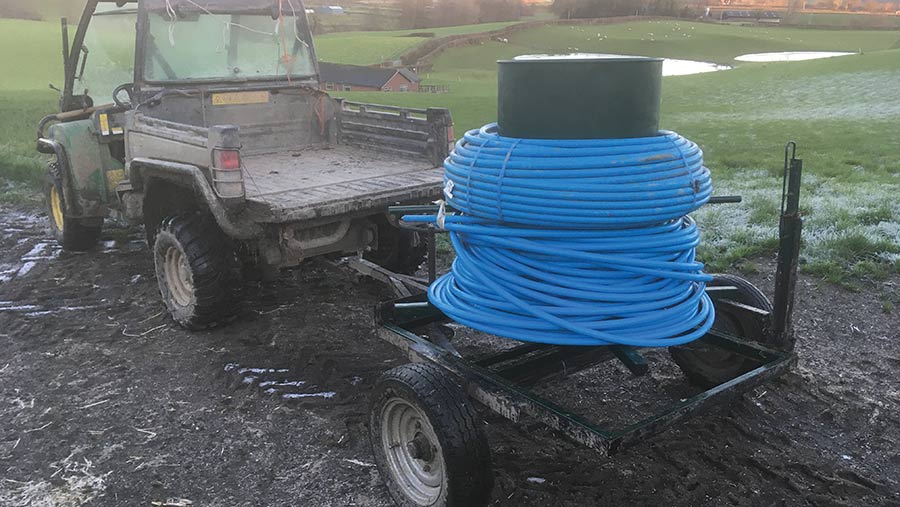
© Marc Griffiths
The unroller can accommodate up to three spools of pipe, with a bar placed between each to separate them. During unrolling, the pipe runs through an adjustable guide at the rear of the trailer.
Mr Griffiths discovered that the rig makes for an excellent drain-clearing tool as well, providing 150m of rod to send down pipes.
This has sped the job up considerably, is far cheaper than buying conventional drainage rods, and there is no risk of sections coming unscrewed. It can also be used for unrolling drainage pipe and fencing wire.
Philip Fermor’s wire unroller
Humping 100m rolls of stock fencing around is a tough gig and East Sussex-based Philip Fermor was keen to limit the manual work after starting to feel the effects of constant lifting.
He came up with a fence-carrying frame that he constructed from 100mm box section to fit on his existing Parmiter Swing Round post driver.
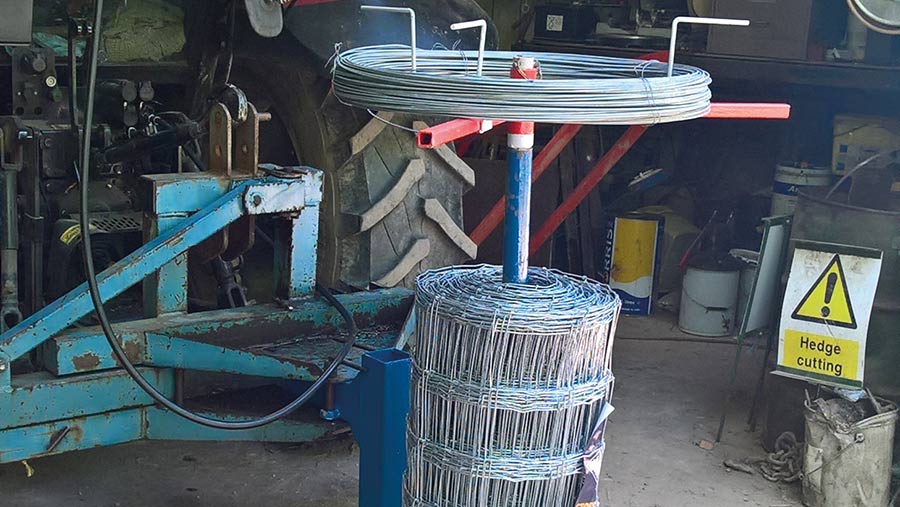
© Philip Fermor
To use it, he swivels the knocker to one side, leaving the central space free to carry the unroller. It is held in place using the standard retaining pins that locate through oversized nuts on both sides to hold everything rigid.
Mr Fermor also mounted a turntable above the main reel for single-strand wire, which is easily removed for loading. All the steel was on the farm already, so it cost nothing to build.
Eric Fawkes’ drainage pipe unroller
Eric Fawkes and the team at Hayborough Farm in Maryport, Cumbria, built an ATV-towed drainage pipe unroller almost entirely from scrap.
The trailer unit was formed from the chassis of a knackered 1t Atkinson fertiliser spreader, to which they bolted a spinning stub axle from a retired trailed forager.
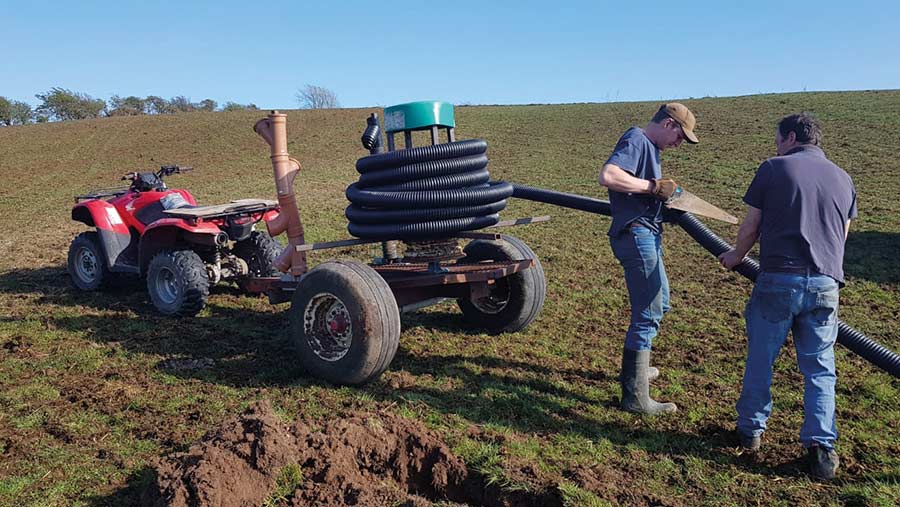
© Eric Fawkes
Lengths of 1in box section support the coil and, at the top, are capped by a plastic bucket lid to make loading easier. A pair of upright rods on the front of the trailer can be used to carry drainpipe junctions.
In work, the driver simply draws forward with the end of the pipe held on the ground. The total bill was a princely £25.
John Goodfellow’s Poacher Block
Having grown sick of poachers roaming freely across his land, cutting locks and stealing gates, Northumberland farmer John Goodfellow decided it was time to fortify his defences.
His Poacher Block concrete barrier sits in field gateways, allowing tractors and sprayers with decent ground clearance to drive over, but blocking the way for 4x4s and wagons. Handily, ATVs can nip between the gaps.
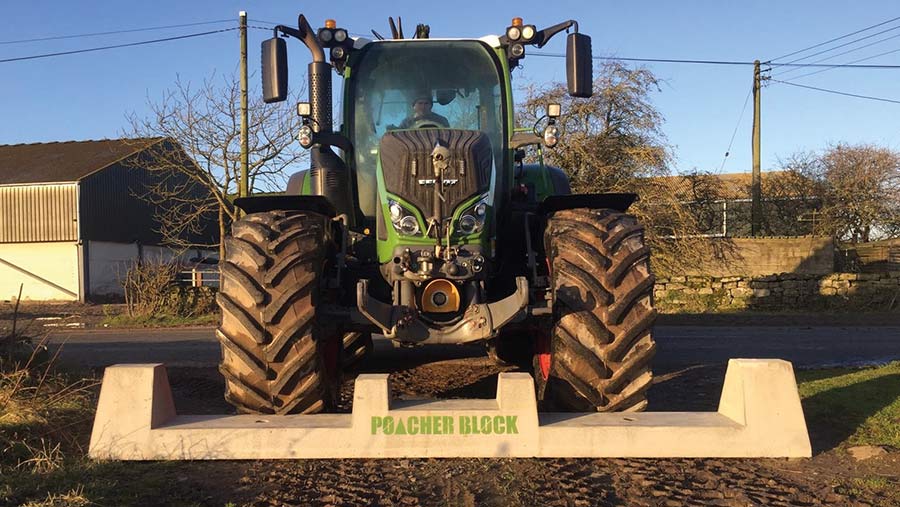
© John Goodfellow
The 4m block will protect a gateway up to 6m wide, weighs more than a tonne and requires a special lifting clutch to shift.
According to Mr Goodfellow, it took a few attempts to master the production process – in particular, getting the concrete to come out of the mould. He is now selling them to farmers.
Trevor Davey’s gate catch and extension
Sheep farmer Trevor Davey of Teignmouth, Devon, has developed a pair of nifty gate-related devices.
The first is a galvanised catch that mounts on a retaining post to hold field gates open. These are easiest made in pairs, he says, by using a 44mm hole saw to cut through the centre of a 240x50mm length of box section.
This can then be cut in half to form the catch, with the semi-circular section used to retain the gate. It should be positioned so that the gate needs to be lifted slightly to latch.
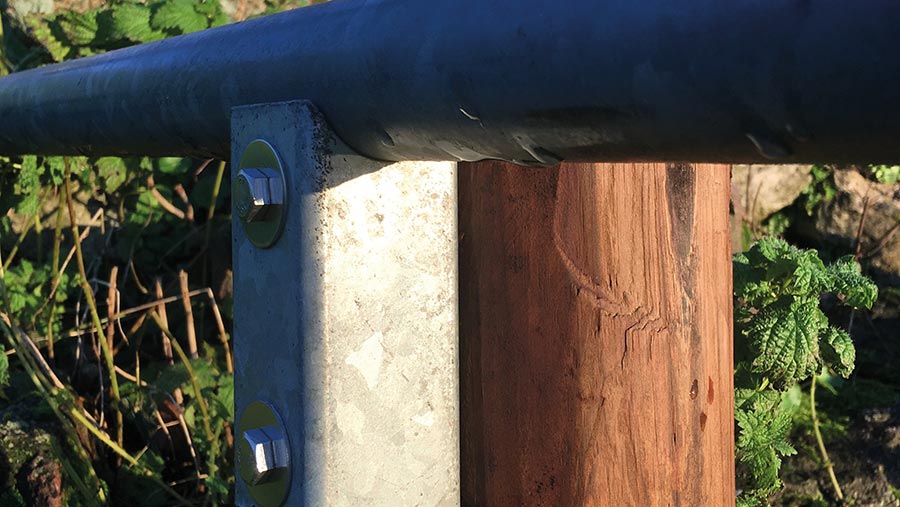
© Trevor Davey
Mr Davey’s other creation is a tapered gate extension to prevent pesky lambs sneaking through the gaps under gates hung on sloping ground.
The 25mm box section is heavy enough to deter the most tenacious sheep and its geometry can be tweaked to suit the specific gate location. It attaches to the existing gate via lugs at each end.
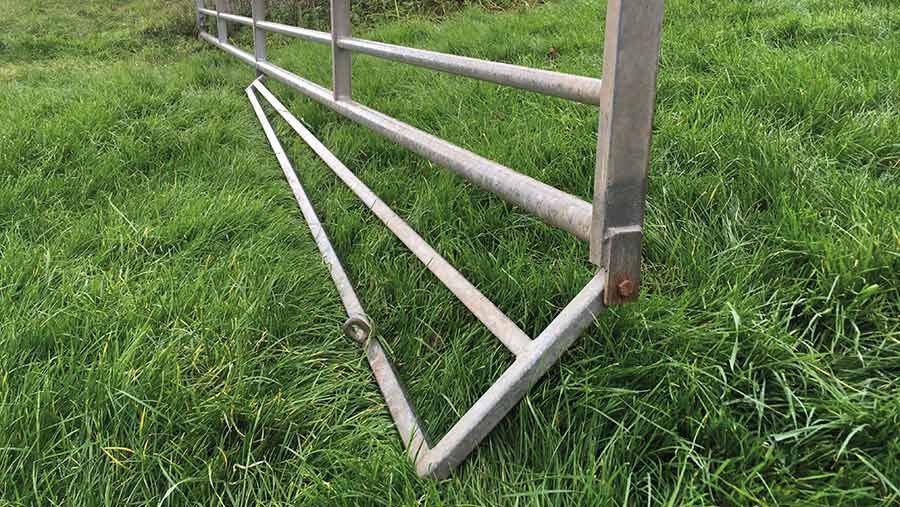
© Trevor Davey
Donal O’Donovan’s Easi Reel pipe unroller
Northern Irish farmer Donal O’Donovan has taken the stress out of dealing with cumbersome coils of water and drainage pipe by designing a towable unwinder.
The trailer tips 90deg so the reels can be loaded vertically before being lowered to a lateral position and attached to the towing vehicle. A steady forward speed sets the reel spinning.
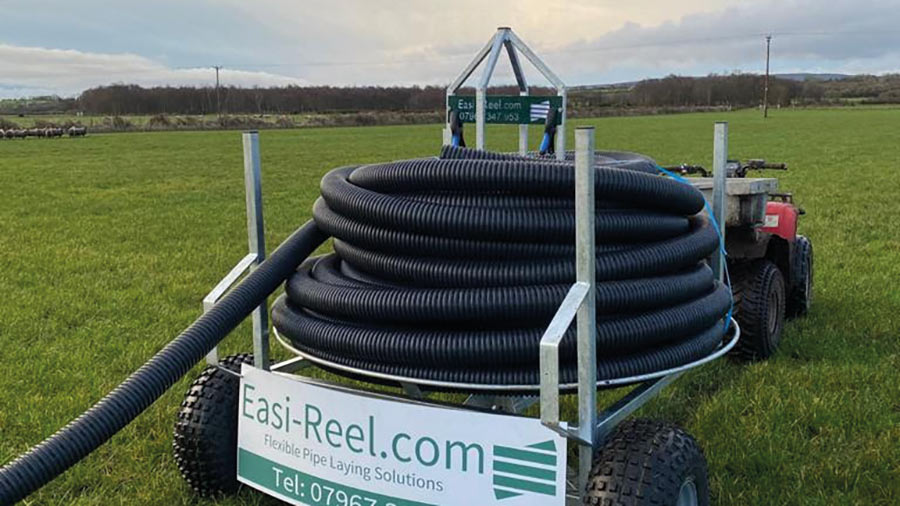
© Donal O’Donovan
The rigs take about a day to put together and consist of 55 individual pieces of metal, with the frame welded and then sent away for galvanising before the hubs and wheels are added.
It can reel out all types and sizes of water and drainage pipe, as well as high-tensile wire, although Mr O’Donovan has had to tweak the design for bigger 63mm water pipe as it requires a larger centre.
Tom Taylor’s tree guards
In an attempt to stop deer from attacking saplings, Cambridgeshire farmer Tom Taylor converted rectangular security panels into make-shift tree guards.
His rudimentary design involves whacking the steel frames with a sledgehammer, allowing them to be bent to form a triangle of three equal sides.
Cable ties or rope hold the sides together and it is anchored to the ground with stakes. Mr Taylor says it isn’t the prettiest guard, but is very effective and cheap to make.
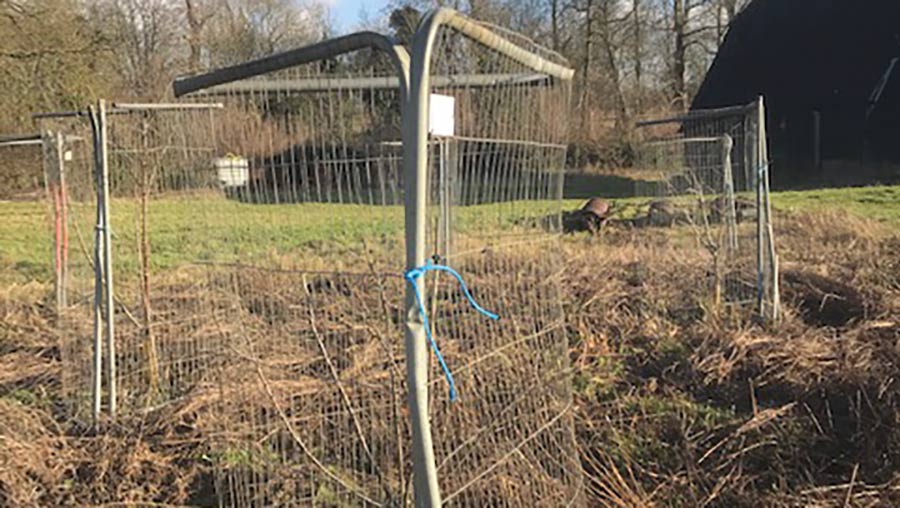
© Tom Taylor
Luke Parsons’ water pipe unroller
Luke Parsons attached a stand to the frame of an old Vicon haybob so it can take the weight of a 150m water pipe reel, allowing him to easily unroll it when setting up new grazing blocks.
The reel sits on a turntable and the haybob can be lowered for loading and then raised again for unrolling.
Further adjustment via the haybob’s original top link attachment means it can be levelled up without touching the tractor’s hydraulics. The cost was roughly £200 and it took about six hours to build.
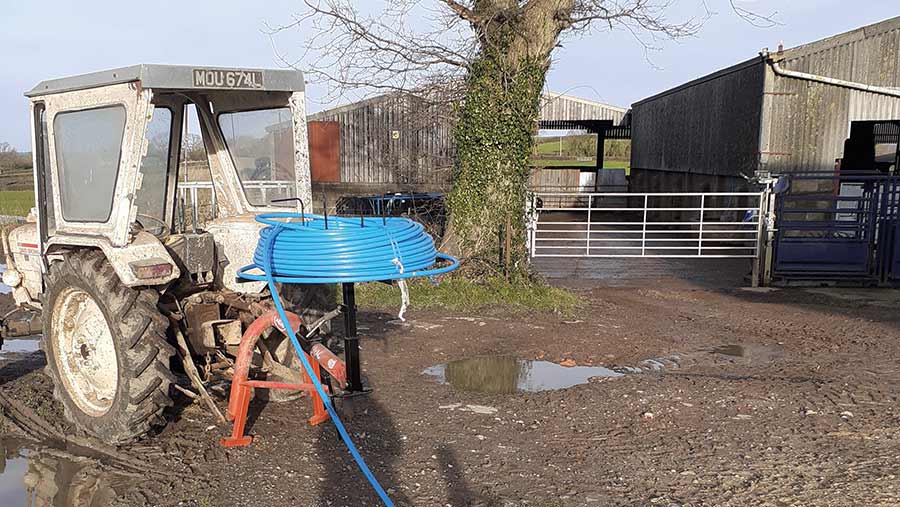
© Luke Parsons
Chris Firby’s wire unroller
A few bits of scrap piping have formed a useful wire unroller for Chris Firby of Manor Farm, Darlington. The unfussy gadget is simply pulled along the ground to unravel the barbed or net fencing.
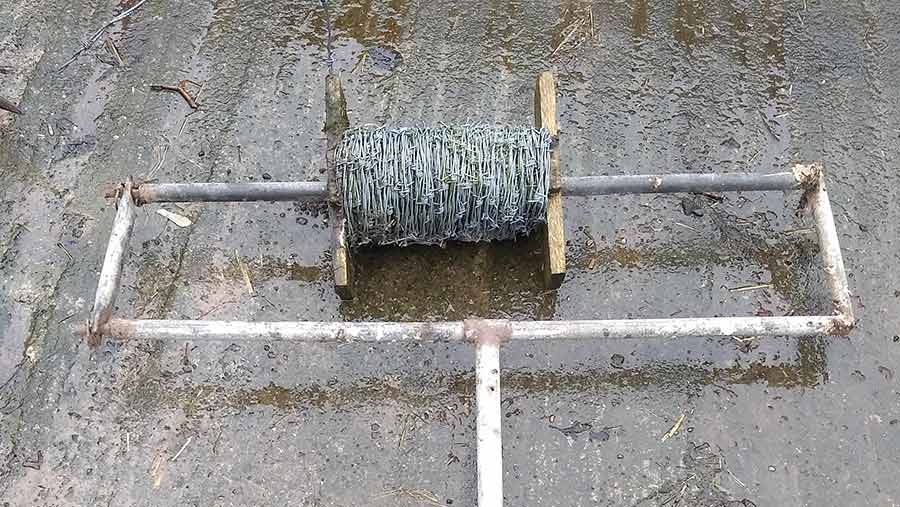
© Chris Firby
Arwel Davies’ ATV stock netting unroller
Making use of some box-section steel offcuts and a length of old milking parlour pipe, Arwell Davies built a simple stock netting unroller that mounts to the tow ball of his ATV.
It’s designed to handle 200m rolls of wire that are too heavy to move by hand, and there should be enough space to accommodate a 300m roll if the need arises. Removing one linchpin allows the pipe to be taken off so that a roll of wire can be loaded.
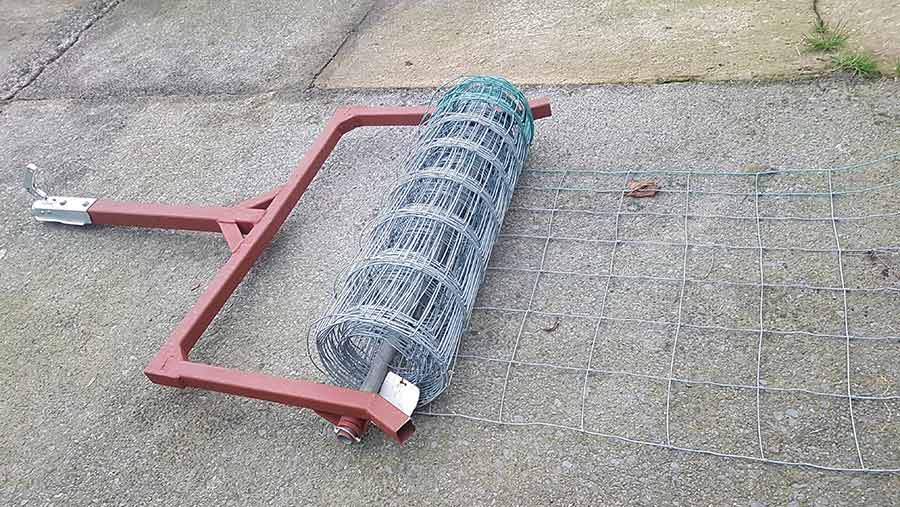
© Arwel Davies
Mr Davies has also made a barbed wire unroller that can be fitted to either side of the blade on his mini digger. The device is mounted on a 1.5in leg that sits neatly in a length of 2in box welded on the blade. The circular base plate was cut out of an old wheel rim.
Gavin Beattie’s fencing box
Gavin Beattie salvaged a £10 transport box destined for the scrap heap and converted it into a useful carrier for fencing equipment and posts.
He welded in new sides, using metal from an old potato harvester, and added a flip-up door so he can safely stow equipment inside. Above this, he constructed a frame to hold posts and fitted a spike on the side for carrying and unrolling wire.
The box hooks on the rear linkage and he has his post-knocker on the front, making this a low-cost, all-in-one fencing setup.
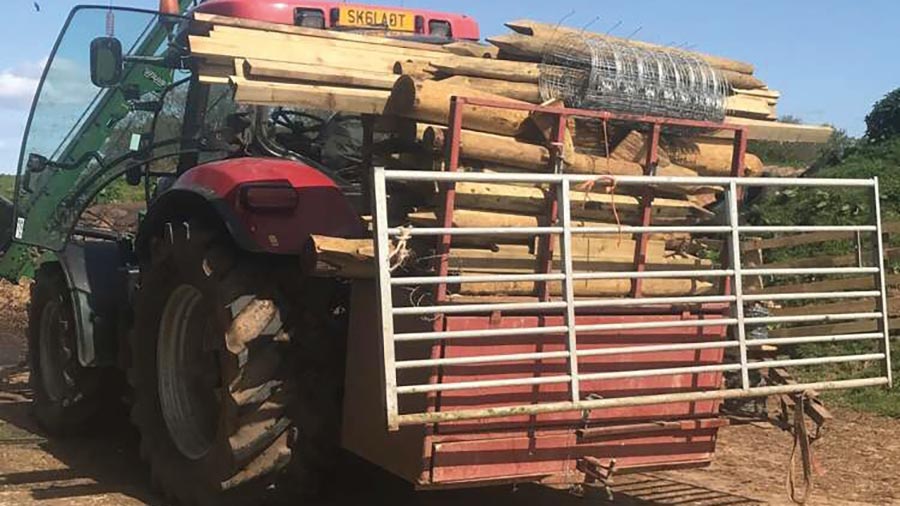
© Gavin Beattie
Billy Armstrong’s wire roller
In an effort to save lengths of old barbed wire taken down during fencing jobs, Northern Irish farmer Billy Armstrong made a custom rolling tool.
It fits to his Kubota RTV or the forks of a telehandler and uses a hydraulic motor to run the reeling mechanism. This was the only component Mr Armstrong purchased, as the pipes, steel for the frame and the reels were on the farm already.
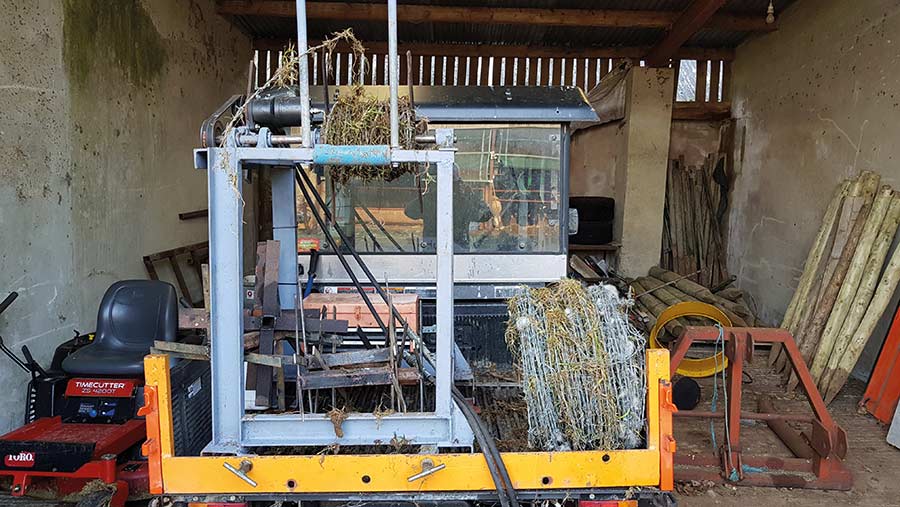
© Billy Armstrong
Richard Overton’s gate anchor
Lincolnshire farmer Richard Overton invented a neat anchor that holds gates open on windy days.
The device is permanently attached to the gate and can be dropped down when required by pulling out a retaining pin. He came up with the design many years ago and has been using it to good effect ever since.
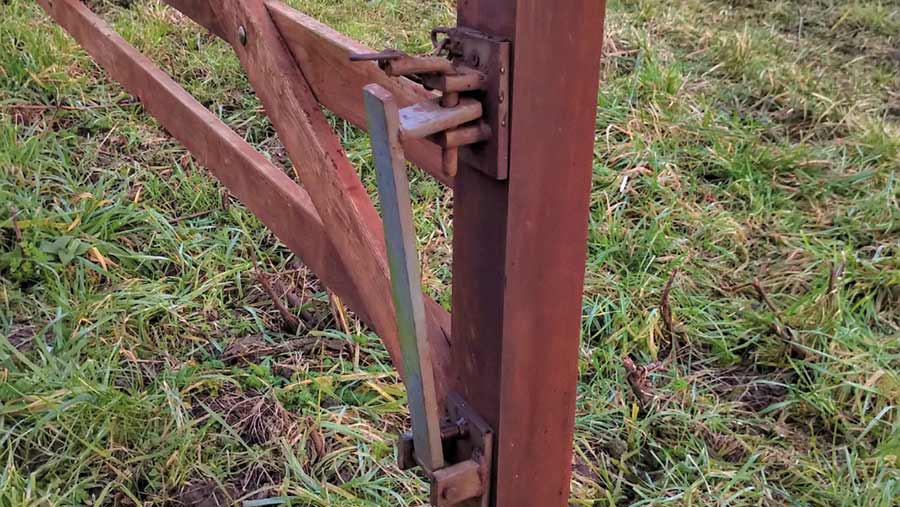
© Richard Overton
Our sponsor
 To achieve your goals, you need the right tools for the job. If what you need doesn’t exist, simply invent it. We share this ethos and used it to create the Ineos Grenadier. An uncompromising 4×4, built on purpose and there to support those who need it most.
To achieve your goals, you need the right tools for the job. If what you need doesn’t exist, simply invent it. We share this ethos and used it to create the Ineos Grenadier. An uncompromising 4×4, built on purpose and there to support those who need it most.

